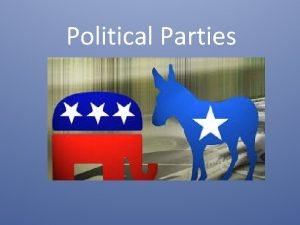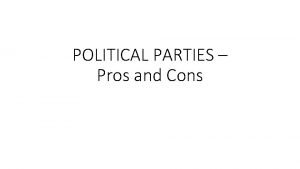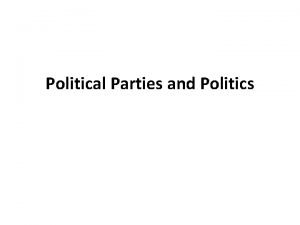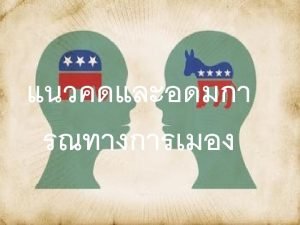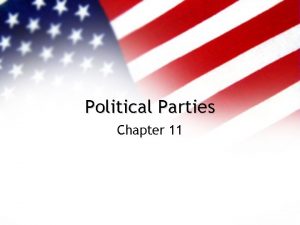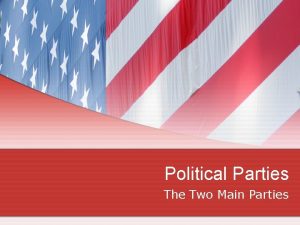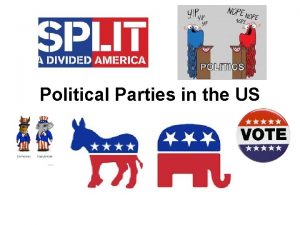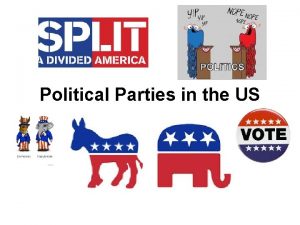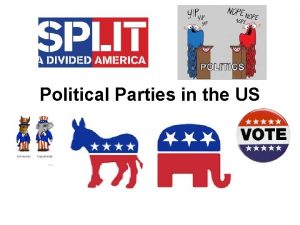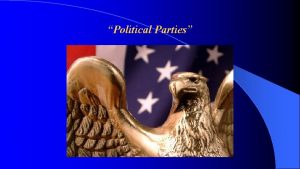Topic 11 1 Political Parties Political Parties What









- Slides: 9

Topic 11. 1 Political Parties

“Political Parties” What is a party? A group of persons who seek to control government through winning an election and holding of public office v Most are made up of people who are committed to a common cause v The Democratic and Republican parties are coalitions represent the two major parties today v They are election oriented v

5 Functions of Parties v The Nominating Function v The Informer-Activating Function v The Bonding Agent or “Seal of Approval” Function v The Governmental Function v The Watchdog Function

5 functions v Nominate--name candidate for political office v Informer/Activating--make people interested in politics v Bonding Agent - “Seal of Approval”--what the party wants the candidate to look like v Government--helps provide leadership v Watchdog—Keeps the party in power in check and responsive to the people

The Two-Party System: Reasons v The Historical Basis -The Framers of the Constitution were opposed to political parties. Who were the first two parties in history? a. Federalists b. Anti-Federalists - Parties are not even mentioned in the Constitution v The Force of Tradition -Most Americans support the two-party system because it has always existed. -Minor parties have therefore made little headway.

Two-Party System: Reasons cont. v The Electoral System - Single-member districts preserve the two-party system--winner-take all. - American election laws are deliberately written to discourage minor parties. v The American Ideological Consensus - Although the United States is a pluralistic society, Americans tend to agree on fundamental issues. - America’s major political parties tend to be moderate in order to attract the largest possible number of voters.

Third & Minor Parties Ideological — Libertarian (set of beliefs) v Single-Issue -- Right to Life v Economic Protest - (Populist party – for the “little guy” and again “Big Business”) v Splinter - Bull Moose - split away from the major parties usually following a strong leader/personality v

Why do Third Parties Matter? Spoiler – Take away votes from a major candidate costing them an election. v Innovator – bring controversial issues to forefront and force major parties to deal with them. v

National Convention v Parties Voice--summer time before an election to nominate their pick for the Presidential Candidate v Functions of Convention: 1. 2. 3. Choose Presidential & Vice-Presidential Candidate Adopt a Party Platform & Rules Bring together opposing sides/factions in the party


